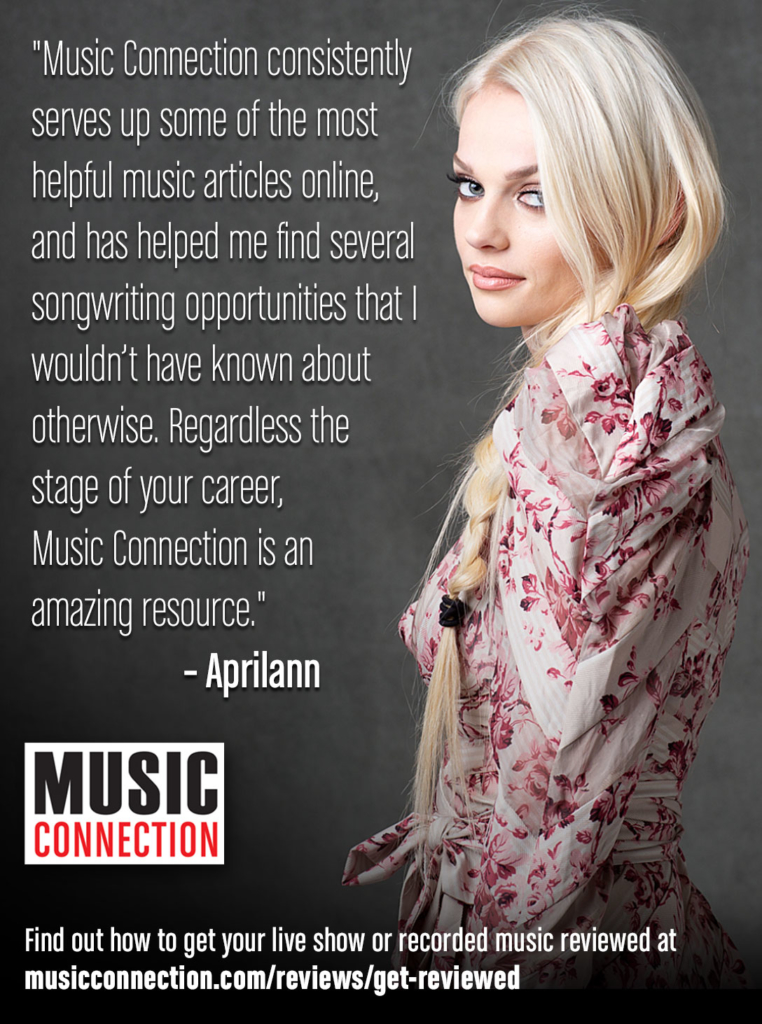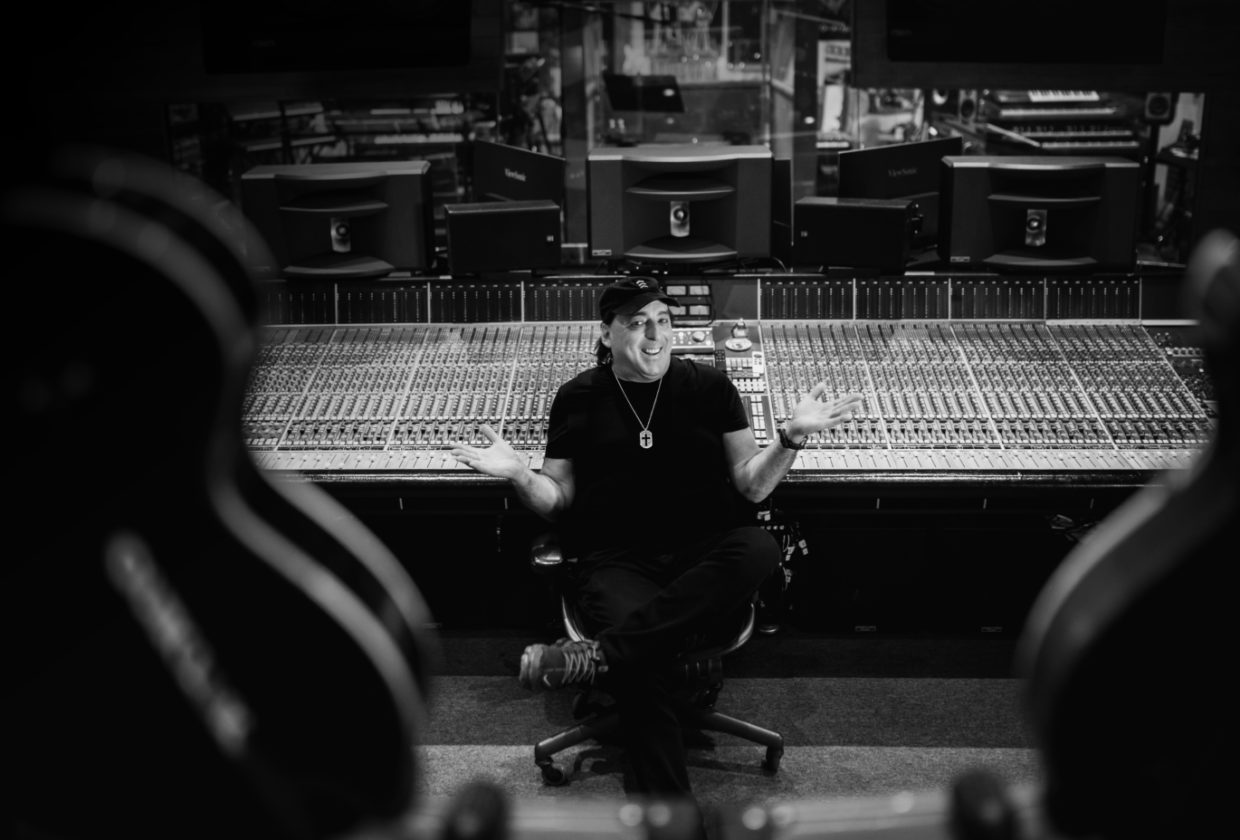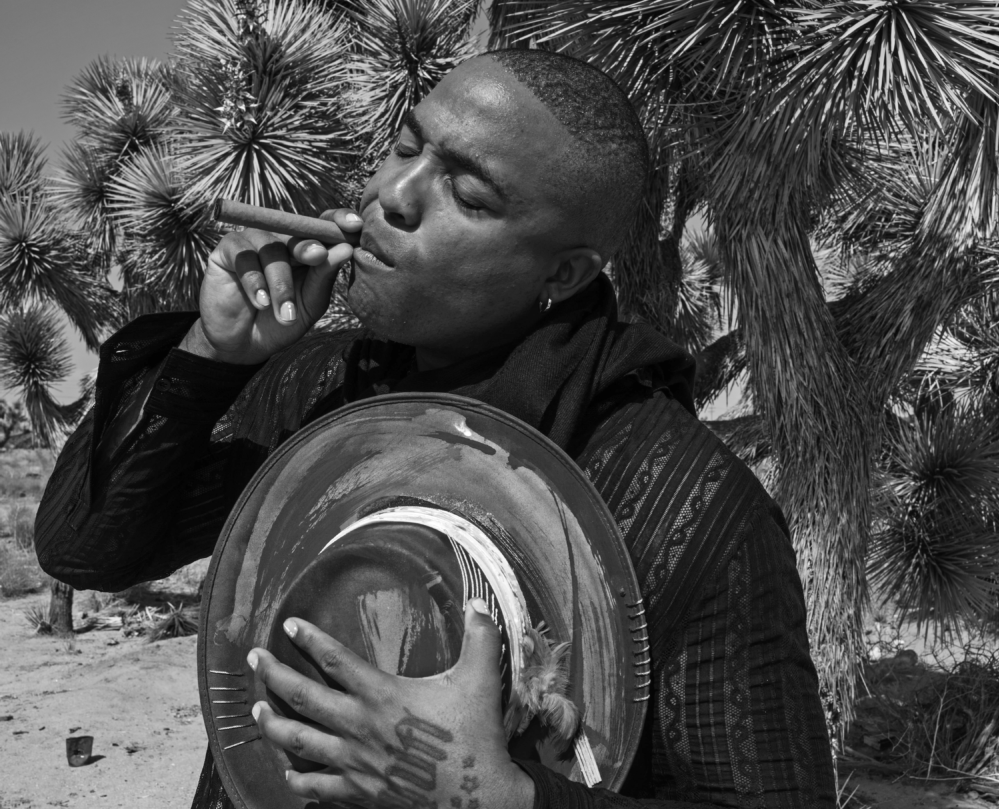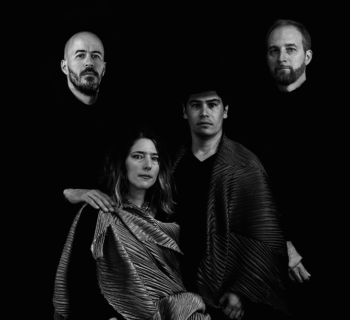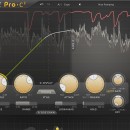The Master Mixer and his Conquest of CLArity
Five-time Grammy-winning producer and engineer Chris Lord-Alge has worked with an enviable array of artists that ranges from James Brown to Green Day. His work on Green Day’s American Idiot earned him one Grammy win for Best Rock Album and two other nominations: Record of the Year and Album of the Year. Indeed, Lord-Alge and Green Day have a working relationship that’s spanned several records. Originally from the East Coast, early on he attracted attention for his work on Brown’s 1986 album Gravity. Cut to the present, when the walls of his San Fernando Valley studio are festooned with gold and platinum records to such an extent that it could easily be mistaken for the Chris Lord-Alge wing of the Rock and Roll Hall of Fame.
His work comes from a variety of sources: largely previous clients but also producers, A&R reps and queries from artists with which he has zero history. “My clients are repeat customers,” Lord-Alge explains. “I prefer to deal with the bands directly. The way it works is band first, manager and then label. A lot of bands contact me because we’ve been friends for years. In some instances, it’ll be a producer that I’ve worked with my whole life. Then there’s the flood of emails I get. I have a special pricing for independent artists. My time is valuable, but everyone gets the same treatment. It doesn’t matter where they sit on the charts. The 16-year-old kid who’s saved up all year for me to mix his song will get the same attention to his mix as the artists I’ve worked with for years. If a mix says ‘CLA’ on it, it was done by me. My assistant Brian Judd is really good, and he gets his own emails.
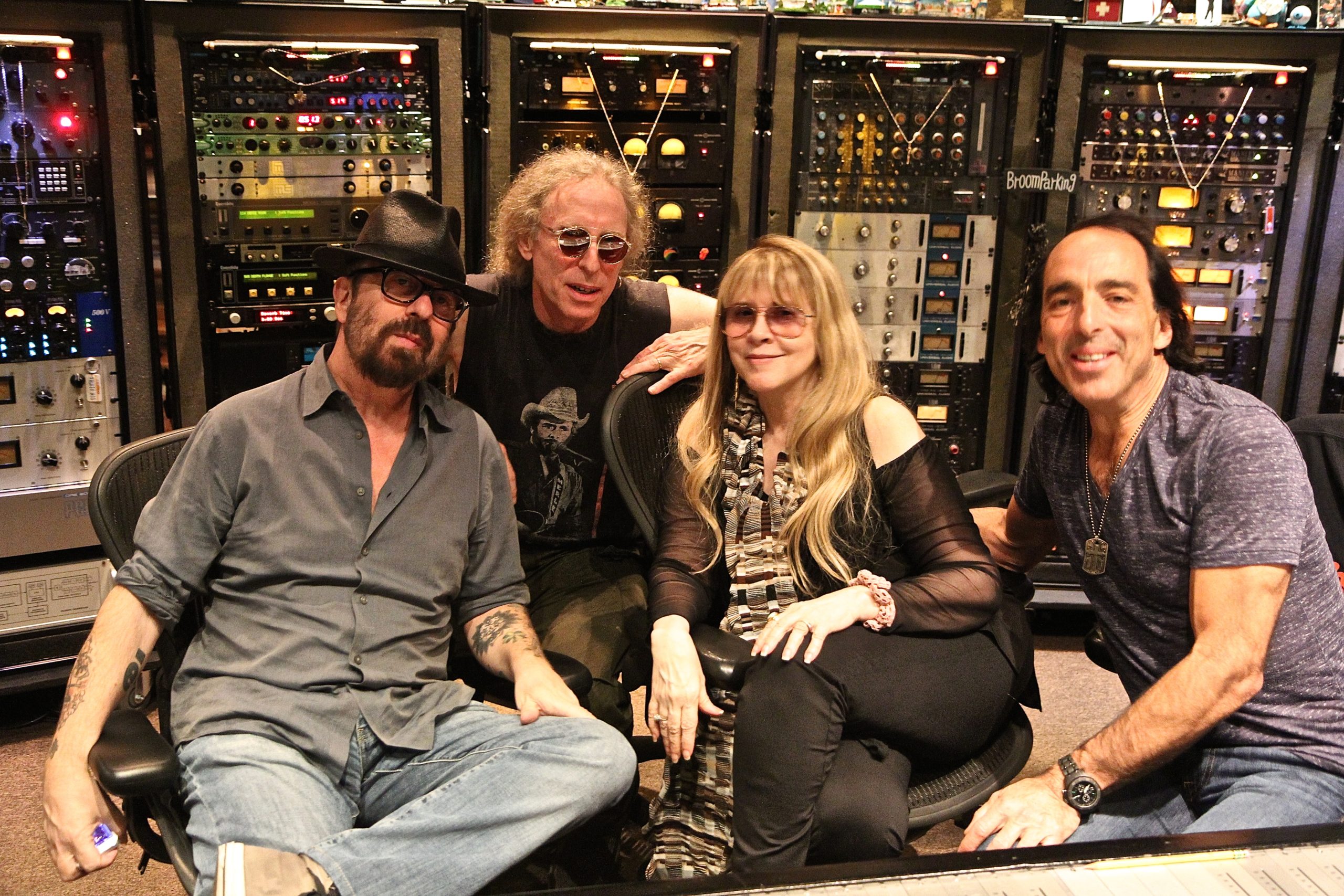
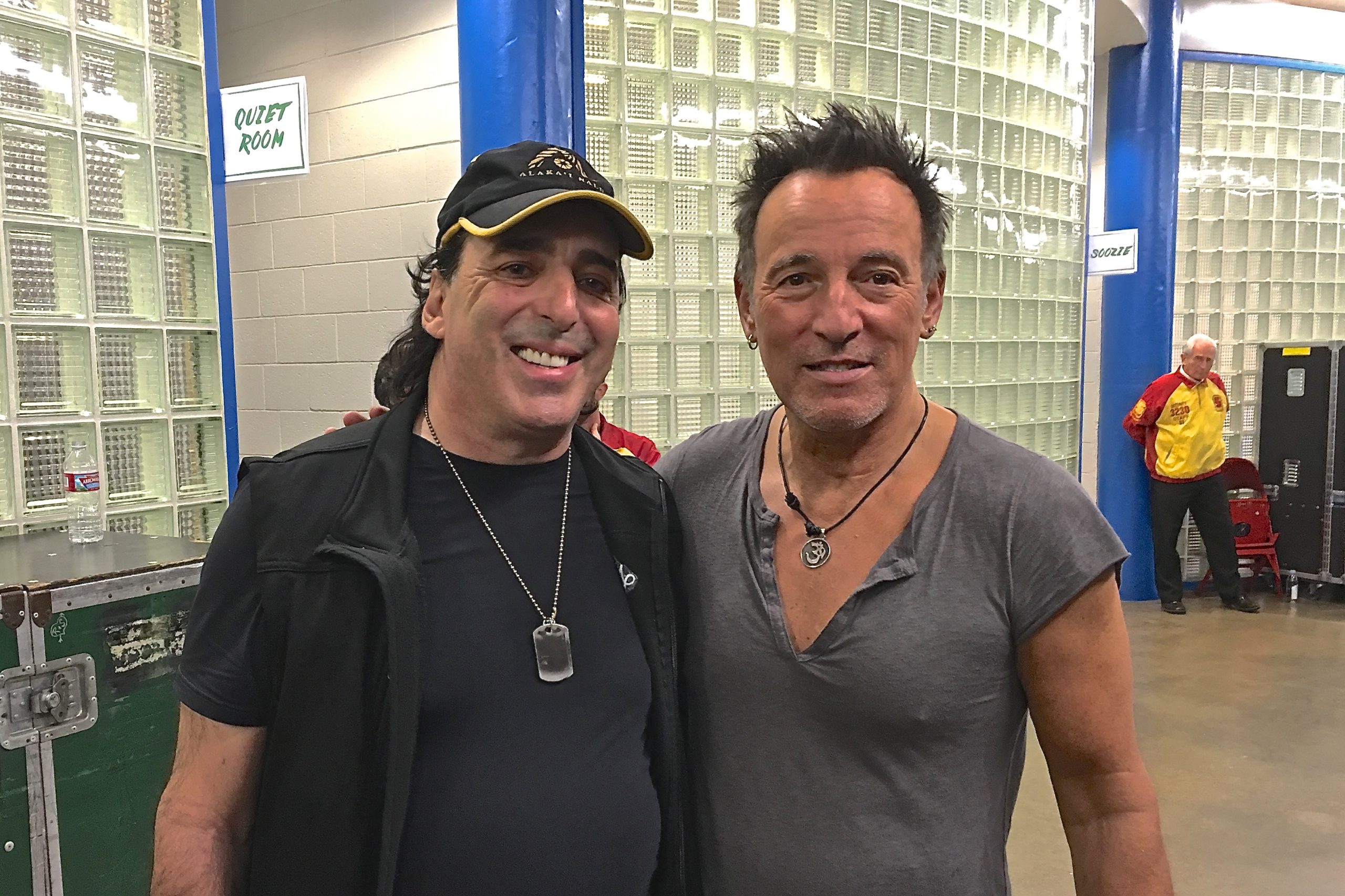
Once a record is captured, the choice of someone to mix it is likely the next question to arise. The way that decision is made can often come down to a few points. “Normally an artist works with a producer and it’s up to him or her to decide whether the recording engineer is also going to mix,” Lord-Alge observes. “At that point, if they feel that he or she isn’t an A-list player for that part of the job, then they may look at what mixers or records they [themselves] like. The best advice about how to choose a mixer—aside from how the project is working —is to ask what records the artist likes and what the producer’s advice is. A lot of them already have a mixer in play; their go-to engineer. There’s also the blind test; the shootout. But I feel that shootouts are sometimes set up for a specific person to win. The only way to do it [fairly] is to give all the players a deadline to submit their MP3 and it must not exceed minus-10 RMS in level.”
Once a mix is completed it is then passed to a mastering engineer for the final touches. The choice of professional to handle this phase is perhaps as important as any of the crucial mix decisions. Certainly, the chosen mastering engineer will have an effect upon a record’s final sound. “I don’t take chances with my career and I don’t take chances with my mixes,” Lord-Alge says. “I just call Ted Jensen [at Sterling Sound]. He does about 99 percent of my mastering, already knows my curve and knows what I like. That’s not to say that other mastering engineers aren’t great. Emily Lazar is an amazing engineer and does great work. Unless the client is fixed on someone else, I stick with Ted or I let another engineer take a shot and have the artist compare the two. There are some projects where I use Chris Gehringer [also at Sterling]. He’s got a sound and when I mix projects that are more pop, more R&B, I’ll run them by him.”
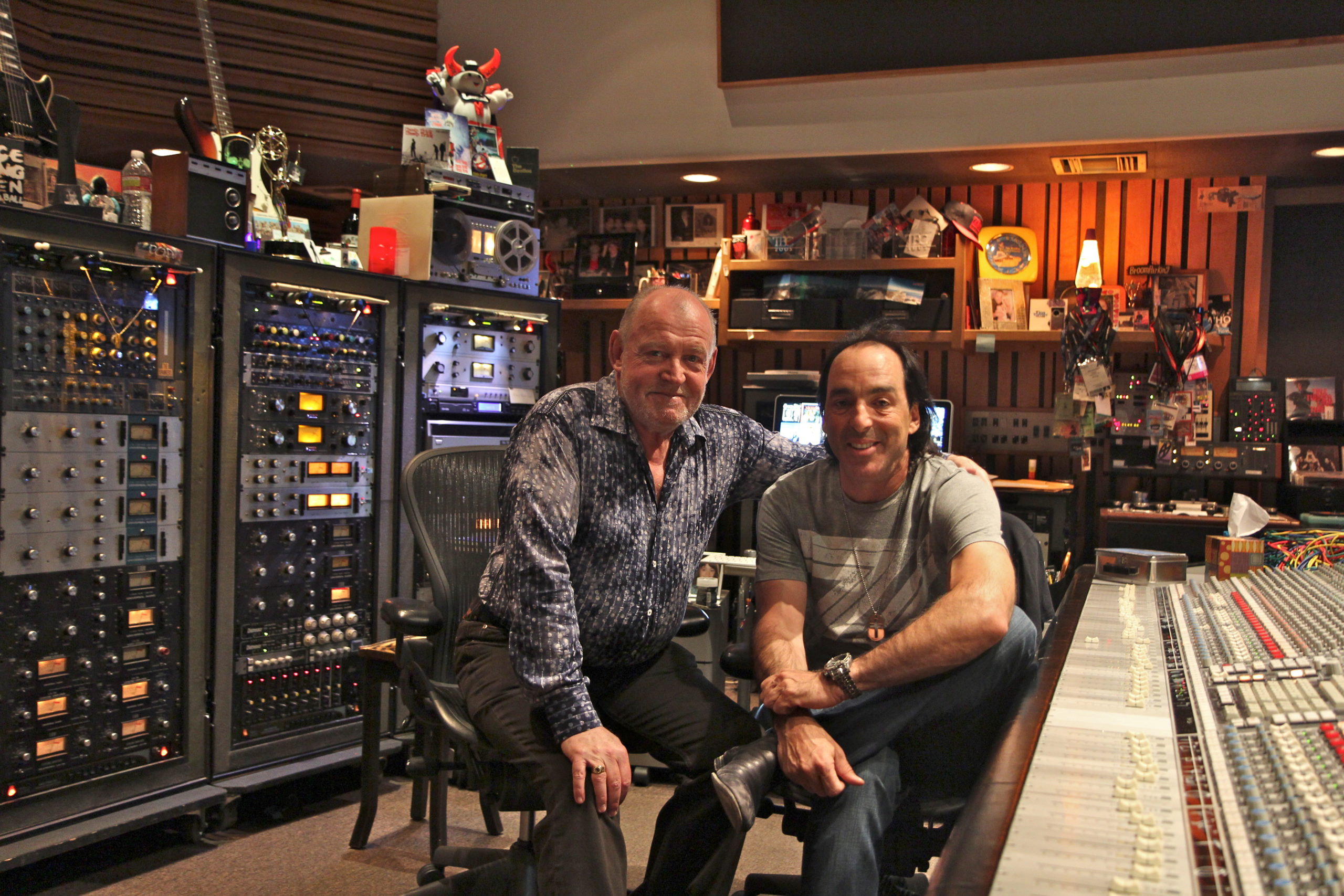
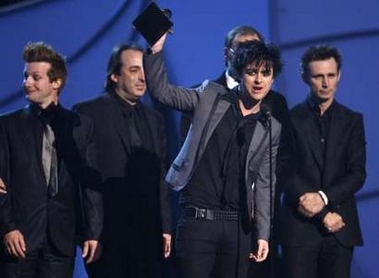
For the most part, his approach to a mix remains unchanged from project to project. There is, however, one type of mix that compels him to modify his mode of attack. “For live recordings I configure my SSL console for full capture, which is a little different,” he observes. “Usually, it has to be in stereo, surround and Atmos, Atmos-ready or stem-ready. But the process is the same: you get the files, you prepare and then output them in a certain way. Another important issue that comes up is the (Rough Mix). Is it for reference? Do they love it? And do I need to pay attention to that? The thing that might change is whether the client will show up for the mix. I prefer, if possible, that they show up if it’s an album project. If it’s a one-off, then it’s not really necessary. I prefer that you don’t come in unless it’s your life’s dream to see my studio (he laughs). In order for me to do my best work, I do it without anyone else here. Once I have it where I want it, if Green Day [for example] wants to show up, then they come in to close the mix because then they have ownership.”
In earlier years, of course, attended mix sessions were common. Lord-Alge misses the days of bands coming into his studio. “It’s about 20 percent now,” he says. “The only time I do a video conference is with Bruce Springsteen, because I’m streaming the mix to him. I’ve not had great results with streaming, because there will be anomalies in what I’m playing back, and it can make me look bad. I’d rather have the client download and listen to it. Most of my mixes get about three notes for possible changes, like the background vocal is down in verse one, strings are up in verse two. Little things like that.”
With five Grammy wins and countless gold and platinum records to his name, it seems nearly a fait accompli that he’s been happy with everything he’s mixed. But like anyone, he has projects of which he’s most proud. “The records that I made from scratch are the ones that have the best end result,” Lord-Alge contends. “Whether it was Tina Turner, Ian Moss or Rick Price. The records where I recorded the whole project are the ones I’m most proud of. I can still put up this Ian Moss album I did in ’88 [Matchbook] with John Robinson playing drums: it’s just so punchy and in your face. If I go back to The 2nd Law by Muse, I really was advancing on where it came from. The new Green Day record [expected in late 2023], (the band and I have really upped our game). On Green Day’s American Idiot or My Chemical Romance’s The Black Parade, those were big conquers. There are albums I’ve mixed but they didn’t come in like that.”
It’s common for engineers to listen to the results of their work in various environments to get a better or more rounded sense of where it sits: their car, on an iPhone, on low-end speakers. But is there a way to emulate those with a plug-in or hardware solution? “Then you’d never get up out of the chair,” Lord-Alge jokes. “There are plug-ins for it, but for me, mixing is a relationship between the engineer and his speakers. They become his lifelong partners. My original Yamaha NS-10m’s with a subwoofer from 1981 are the ones I’ve always relied upon. I’ve created the new CLA-10s with my partner Avantone and have had them hooked up too. I also have some nice JBL 708’s that are the closest to the old NS-10m’s. Having your monitoring down to a science is everything. I say the lowest form of quality you can test on is the best way to go. I’ve had a boombox in my rack since the 90s and often I’ll listen to a mix on my PA at home and will hear where I need to make fixes. I’ve recently added a 9.1.4 Atmos system comprised of Ocean Way Monitors as my work in Dolby Atmos has increased over the past year.”
With so much work that flows from his studio, it’s tempting to envision it as an industrial complex; a gold and platinum record factory that churns 24-7, 365 and is staffed by sleep-deprived Oompa Loompas. But his team is actually quite small, nimble and well-rested. “Brian Judd is my one assistant,” Lord-Alge explains. “We’ll usually have a second assistant who is the combo man who’s running the studio, getting the food and [otherwise] helping. He’ll add drum samples and do some of the tom editing. Imagine a live show that I’m doing, and we want to add drum samples to 28 songs, we need that extra help. Or just doing the tom edits, which is literally editing them so that they’re trim to where they’re playing only. That takes a minute no matter what.”
Over the years, he’s connected with several gear and plug-in makers, notably SSL, Focusrite, Roland, Iron Mountain, Audio-Technica, Avantone, Pultec and Waves Audio for his collection of CLA plug-ins. How do plug-ins figure into his signal chain? “You can’t be a great painter without a great paint box,” he shares. “Avantone is my partner making power amps and studio monitors. My signature CLA-10s are powered by the CLA-200 power amp. I also made the powered CLA-10a studio monitors. Those are really for the new users so they can have what I have. Another piece of hardware my partners from Black Lion Audio and I created is the (Bluey) compressor. This is perfect replica of my favorite original Blue Stripe 1176 compressor from the 1960s. Those are Pultec’s are part of mix bus chain and every single one of my mixes goes through a pair of them. Steve Jackson at Pultec made me a custom pair that matches my originals, and they don’t drift. I also depend on the plug-ins I make with Waves and the ones made by SSL. I enjoy making the tools through Waves,” he continues. “I’ve met many people who know me more through the plug-ins than anything. I’ve also done drum samples with Steven Slate. But I also use my original go-to outboard gear that many people have discounted.”
When mixing, there’s no end to the tools from which to choose from. Chris has almost every hardware compressor made. But there are also plug-in compressors so at some point there’s a choice about which to use. “First, I always use a hardware compressor,” he comments. “There are instances where preparing a mix I’ve used enough software compression that all I need to do is bring it up on the faders. Even though all this analog flavoring and vintage gear is nice, sometimes EQs on a console from channel-to-channel aren’t the same as they were when they were young. If I really want to EQ a pair of something perfectly, I’ll keep it all in the box. The channels on my SSL will be there to create the analog sound with the line amp, but I won’t use EQ or compression on it. It depends on the song. Most of the time I’m using my outboard gear; the analog reverbs and delays. Sometimes on more pop things I’m using the console as a big summing mixer because it’s all pairs, it’s all EQed in the box and I’m only using the console to bring it up on and automate.”
No matter how successful you are, there are vexing challenges in any business. Lord-Alge finds that his biggest ones have always come down to interpersonal issues rather than technical ones. “Managing the dynamic between band, producer and the label —that little triangle is everything,” he asserts. “They each have their own languages. Mixing is the easy part. Communicating what that artist wants is the hard part. It has nothing to do with the gear and everything to do with your bedside manner.”
It’s easy to presume that bands have absolute control over the way a record is put together. But management, A&R reps and producers all get to have their say. “Here’s an example,” Lord-Alge begins. “The band will have some moves that they want, which will be the opposite of what the producer wants. The label will want something in between both of them. Often the label, management and producer will be more in sync than the band. There have been times when the producer finishes the record, hands it off to me and says ‘You deal with the band and the label. I’m out of it.’ Generally, if you hire Chris Lord-Alge, what he delivers is what you’d expect. Usually there are no changes and everyone’s happy. There are a handful of times when politics are involved, and I don’t get why. A song is a song. It either sucks or it rocks. All I know is that a song dictates what it wants to be. I prefer to work directly with producers, because he or she knows what makes the band happy.”
He’s collected a trove of memories during his career. One of his favorites is of logging in long hours with artists and losing track of time. But it’s rare for him to pull all-nighters like he used to. “The only time I do that is with Stevie Nicks because she likes to hang out,” he says. “Sometimes I’d look at the clock and say to her ‘Hey, Stevie. Is it a.m. or p.m.?’ There’s also the time that Bruce Springsteen sent me a video on my birthday in which he sang me “Happy Birthday.”
Another important initiative for Lord-Alge is an annual event he started about five years ago called Studio Hero’s. Lord-Alge also hosts a dinner at AES in NYC that pays tribute to the engineers/producers who have passed in the last year, as well as honors the current community of studio wizards that continue to make a difference to each of us. This year paid tribute to engineers-producers Ed Cherney and Al Schmitt and audio production and communications executive Lisa Roy. The annual event is a Who’s Who of the industry. This year’s attendees included Bob Clearmountain, Ann Mincieli, Giles Martin, Dave Pensado, Jimmy Douglass, Marcella Araica, Michael Brauer, Paula Salvatore, Candice Stewart, Will Lee, Troy Germano, Leslie Ann Jones, Maureen Droney, Robbie Kilgore and more. “I host this party for one reason. That we never want to forget the people we make music with.”
Despite being widely regarded as a reigning mix master, Lord-Alge isn’t always comfortable with the title “mix engineer,” either when describing himself or most other audio pros. “I’ve never felt that I’m a mix engineer,” he admits. “I’m an engineer. Mixing is part of what an engineer does. It’s just a term for finishing a record. You’ve only earned the mixer badge once you’ve had success at mixing for people. If you’ve just bought a laptop and some CLA plug-ins, you’re not a mix engineer. I would love to have Bob Clearmountain, my brother Tom Lord-Alge (a Grammy winning engineer as well), myself and four other of the great mixers judge whether or not someone is a mixer. The best way to learn is to record a band, because that way you’ll see what to do and what not to do; what screws you in the mix and what doesn’t. You’ll see that you can engineer in a certain fashion to create the end product while you’re recording. That’s how I learned.”
There’s a saying he lives by—“Learn, earn, serve.” Lord-Alge has certainly learned and earned. Now he likes to serve the engineering community by giving back and sharing his knowledge. He teaches a number of courses, notably Mix With The Masters. “We started that 10 years ago,” he explains. “It’s about bringing people down for a week in France and teaching them hands-on. I’ve also done a bunch of one-day seminars. The great thing about teaching is that I’ll have 25 students and by the end of the week, they’ve come a long way and learned a lot. I don’t just teach about how to get sounds. I teach about how to run your music career and how to be organized.” The CLA Teaching Academy is a likelihood in the near term. In fact, Lord-Alge aims to launch it sometime within the next five years.
With an eye always to the future, Lord-Alge has a number of renewed interests and active or upcoming projects. “I enjoy producing now,” he reveals. “I like to help artists with arranging and I love building songs from scratch. I enjoy taking a vocal piano or guitar demo, putting it together and getting players to play on it, making it into a record. This way I don’t have to answer to anybody (Chris laughs). As far as mixing, I’ve got the new Green Day record [expected out end of 2023] that we’re almost done with. It’ll probably come out toward the end of the year. And I just finished Elton John’s final show at Dodger Stadium. The live stuff is a different challenge; it’s a different headspace. It’s more grueling but I love live shows. I’ve also been working with the Eagles, because they plan some new live content. Then I’ve got a handful of rising bands that are coming out with debut records, as well as some newer country artists like Shane Profitt and Chris Janson. I’m really happy with how those records came out.”
To an outsider, what Chris Lord-Alge does may seem to be steeped in magic, math and mystery. But he doesn’t see it that way. As he breaks it down, “My job is simple: I serve the artist and I serve the music. If I serve anything else, then it’s for the wrong reasons. The only thing that matters to me is that I do justice to the music that’s in front of me on a daily basis. I want everyone to walk away smiling.”
Visit chrislordalge.com
